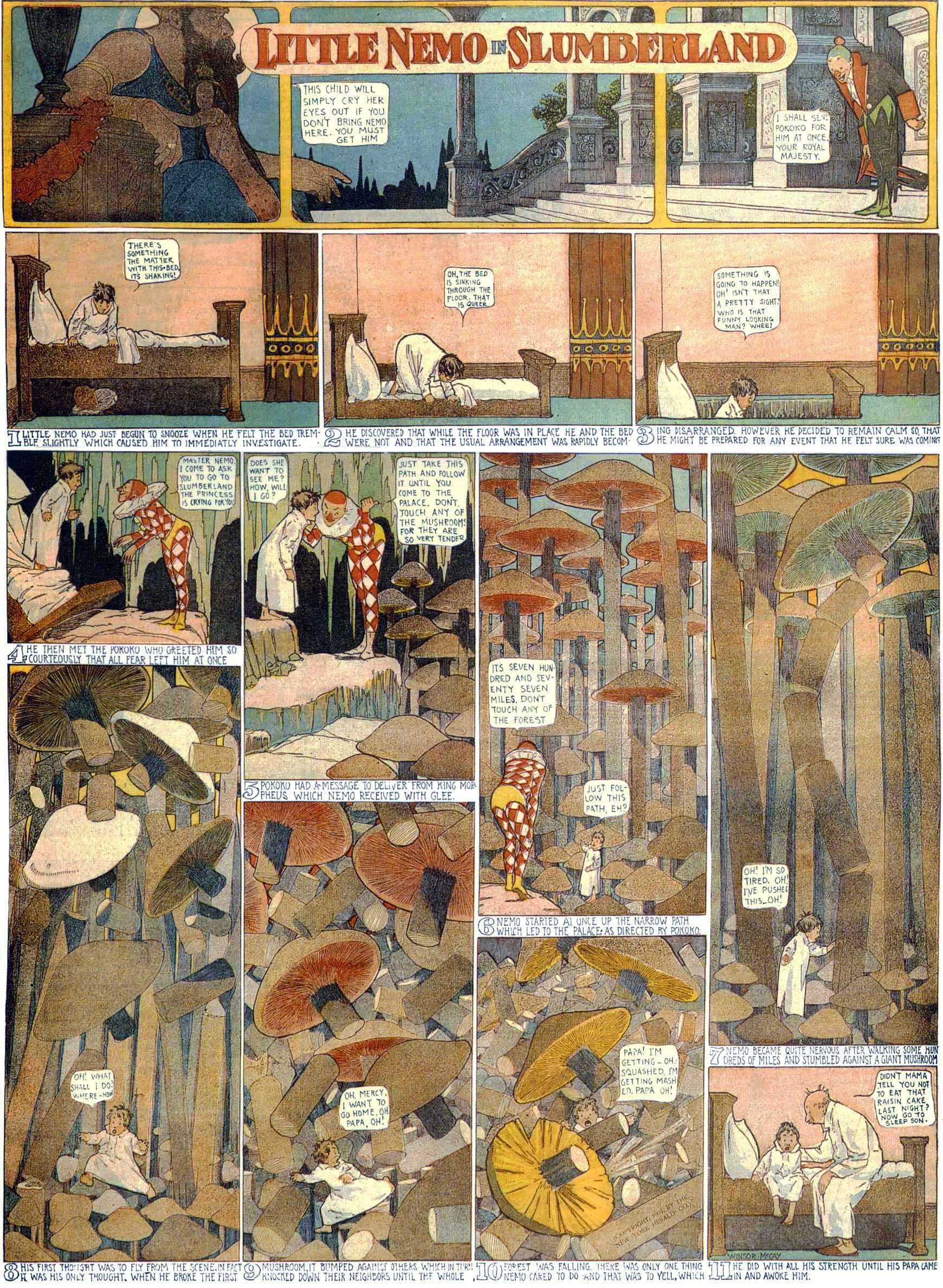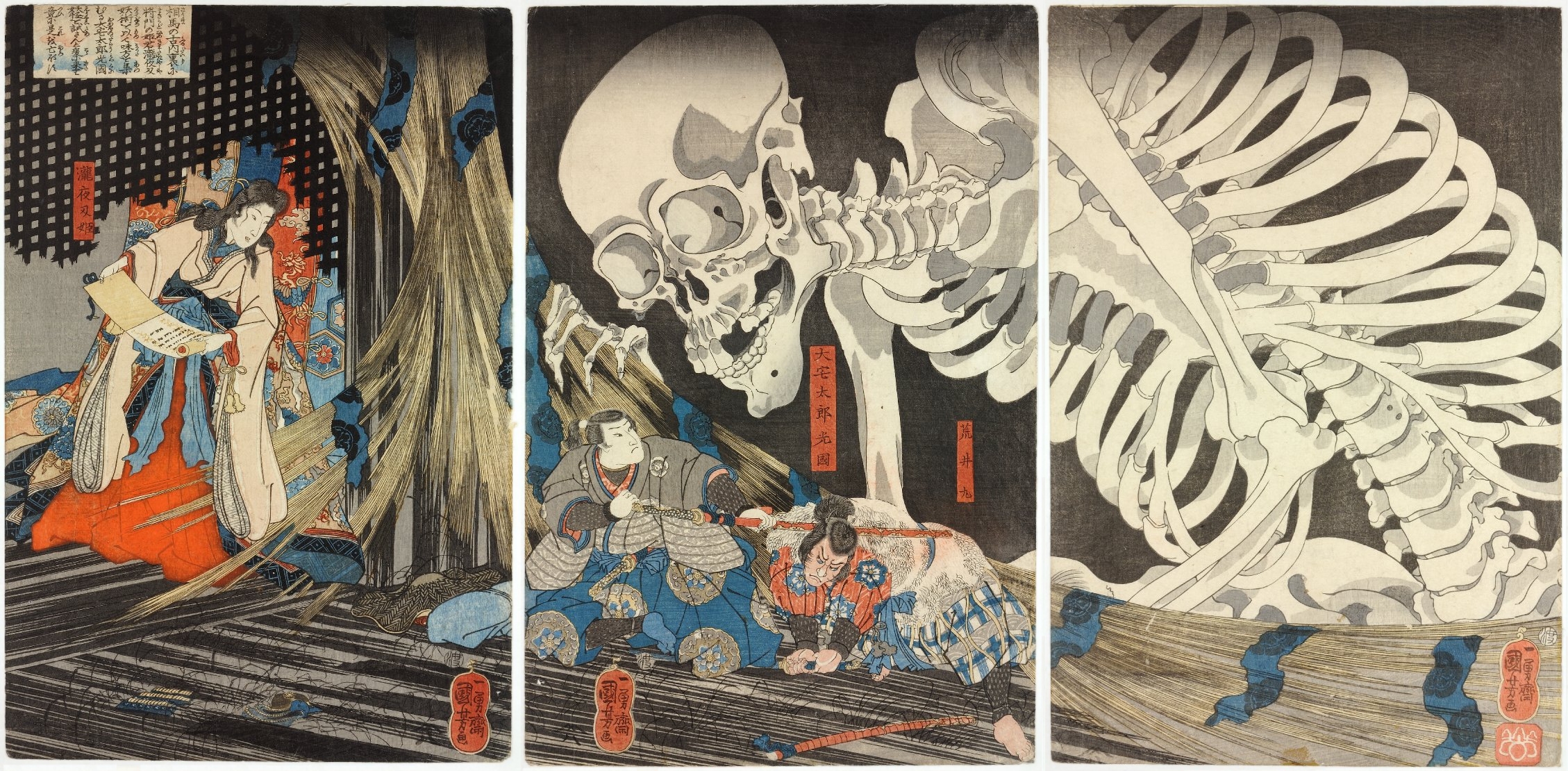
Comics, according to comics critic Scott McCloud (1994, p. 9), can be defined generally as juxtaposed, deliberate sequences of images, "intended to convey information and/or produce an aesthetic response in the viewer." It is this juxtaposition of images that makes the "sequential art" of comics different from single-panel editorial cartoons or animation.
In North America, the first modern comic strips emerged around 1900 as features of newspapers. Notable titles included Little Nemo, The Yellow Kid, and the Katzenjammer Kids.
In the 1930's, the first stand-alone comic books were published by Eastern Color Press. These "floppy" comics, featuring roughly 20 to 50 staple-bound pages, became the dominant format of comics in the 20th century.
Below: Strip of Little Nemo in Slumberland by Winsor McCay in the New York Herald (Oct. 22nd, 1905) (Source: Wikimedia Commons)

Many comics scholars divide the history of North American comics into distinct "ages":
The term Graphic Novel was popularized by Will Eisner in an effort to create a marketable label for his 1978 work A Contract with God, and Other Tenement Stories that would distinguish this longer-format work about working-class Jewish life in the Bronx from superhero-based stories published in single-issue format.
Manga is a form of comics originating in Japan, with many comics scholars ascribing its roots in the ukiyo-e genre of painting which emerged in the late 17th century. When translated into English, the original right-to-left formatting of manga is generally maintained, and the cover is generally on the opposite side of covers for English-language books.
Manga titles are typically published serially in anthologies such as Weekly Shonen Jump or Big Comic Original. Series instalments are often later collected into softcover tankobon. Some examples of manga collected into this format at Western Libraries include Rumiko Takahashi's Ranma 1/2, and Osamu Tezuka's Buddha.
Below: Ukiyo-e Print: Takiyasha the Witch and the Skeleton Spectre by Utagawa Kuniyoshi (c. 1844) (Source: Wikimedia Commons)

Bande Dessinée - also shortened to BD, applies to francophone comics from Belgium and France where a distinct comics culture emerged in the mid-20th century. A notable feature of BD's is that they have been typically published in hardcover albums which were historically sold in bookstores rather than at newsstands like American comics. Notable examples of BD's are Hergé's Tintin and René Goscinny & Albert Uderzo's Asterix.
Below: BD Authors René Goscinny (L) and Morris (R) in 1971, holding Asterix and Lucky Luke albums respectively (Source: Wikimedia Commons)

For further reading:
Couch, C. (2000). The publication and formats of comics, graphic novels, and tankobon. Image & Narrative. https://www.imageandnarrative.be/inarchive/narratology/chriscouch.htm
McCloud, S. (1994). Understanding comics: The invisible art. HarperPerennial.
Petersen, R.S. (2010). Comics, manga, and graphic novels [electronic resource] : a history of graphic narratives. Praeger.
Eisner Awards - Perhaps the most prestigious American comics awards, the Eisners were first awarded in 1988 at the San Diego Comic Con and have been awarded yearly ever since. Eisners are awarded in over 30 categories including Best Writer, Best Anthology, and Best Academic/Scholarly Work.
Harvey Awards - First awarded in 1988, the Harvey Awards have been presented at New York Comic Con since 2020. Winners are voted on by professionals in the comics industry: creators of comics such as artists, writers, and editors, but also comic retailers, librarians, and people involved in sales and marketing as well. A full list of Harvey Award winners is available here.
Ignatz Awards - Established by the Small Press Expo in 1997, the Ignatz Awards honour comics published by small publishers, creator-owned comics published by large publishers, and comics that are self-published. They are awarded yearly at the Small Press Expo in Bethesda, Maryland.
Joe Shuster Canadian Comic Book Creator Awards - Named after Torontonian cartoonist who co-created Superman for DC Comics in the 1930's, the Joe Shuster Awards have been awarded yearly since 2005 to Canadian comics creators.
Tezuka Osamu Cultural Prize - Honouring the creator of the internationally famous Astro Boy (originally titled Mighty Atom in Japan), this prize has been awarded yearly in four categories since 1997.
Guide author: Derya Hodge